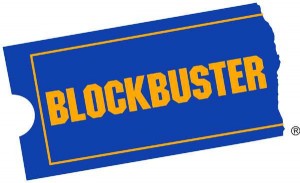
Big Apple Day
Residents on Long Island are learning what Cablevision subscribers in Bronx, Brooklyn, and Connecticut have known for a few years now — if you want to watch Cablevision’s TV lineup, be prepared to shell out almost $7 a month for every television in your home.
It’s part of Cablevision’s march to an all-digital, encrypted cable lineup. If you want cable TV, you’ll need to lease one of Cablevision’s digital set top boxes or CableCARD devices.
Cablevision says it will provide customers with free boxes for their televisions for the first year, available in limited quantities at Optimum stores or shipped free to your door by UPS. But after 12 months, customers with several TV’s will find steep increases to their monthly bills, just to cover boxes many don’t want in the first place.
“It’s just more gouging from Cablevision,” writes our reader Stephanie who lives in Lindenhurst, N.Y. “We used to watch television box-free at the kitchen table or on the computer with our Slingbox, but now our home will need three more boxes when we already pay them $14 for the two we already have.”

Cablevision's Conversion Schedule for Western Long Island
For customers like Stephanie, that adds up to nearly $35 a month just in equipment fees.
“Our bill is already $170 a month and next year it will probably run over $200 with the boxes we don’t want and whatever their next rate increase turns out to be,” she writes.
Cablevision claims they are not doing anything their competition isn’t.
“In fact, every other TV service provider in the New York metropolitan area already requires digital boxes for each TV,” a Cablevision spokesman stressed.
Those upset with the change are considering making some changes themselves — some by switching to a promotional package from satellite TV or Verizon’s FiOS.
“I am well aware they both want you to use boxes on those services as well, but for a year or two, we could probably knock $30 or more a month off our current cable bill with a promotional deal,” Stephanie says.
What about after the deal expires?
“We’ll just switch back to Cablevision on one of their promotional deals,” she says. “For this family, it’s about the ‘total amount due’ at the bottom of the bill.”
Cablevision’s ongoing transition to digital caused panic when it blanked out broadcast basic cable service for more than 500 residents of a Coney Island complex housing numerous senior citizens, almost all watching local television signals delivered in analog. When Cablevision made the digital switch in August, every local channel suddenly disappeared. The NY Post explained what happened next:
Despite the best efforts of property managers to inform the elderly residents of the Luna Park Houses and the Warbasse Houses about the change, some of them just didn’t get the message.
“It was hell trying to explain this to the elderly people,” said Rochelle Captan, the manager of the Warbasse houses.
“Everyone in the Luna Houses — we think we’re the chosen ones, we don’t have to convert to digital,” said Fikret Deljanin, the property manager of the Luna Park Houses. “I don’t understand the ignorance — we’re just an ignorant population, I guess.”
Both Deljanin and Captan said they had called in favors with Cablevision to keep the analog service going as long as possible — and that now they were having to call in another favor to get some free conversion boxes delivered to calm disgruntled elderly residents.
But Joe M. said many elderly residents — including his mother — are feeling betrayed and confused.
“My mother wants her channels 3, 10 and 12, that’s it. Now the seniors are told they have to get a converter box — I don’t mind that — but my mother is 87! She doesn’t know anything about this!”
And now, it’s simply a matter of picking up the pieces and trying to move on … over to the couch to watch this afternoon’s episode of “Murder She Wrote.”
Cablevision also announced this week it had upgraded its set top boxes to support several new applications and services on the way. Multichannel News covered the story:
Cablevision Systems has now deployed Zodiac Interactive’s interactive TV platform — including support for the industry’s EBIF specification — across the MSO’s entire New York-area footprint serving 2.9 million digital cable subscribers.
 The operator is using Zodiac’s PowerUp framework software, running on Cisco Systems’ native set-top box environment, to run several interactive applications and services. These include iO TV Shortcuts, search, an enhanced program guide, video-on-demand navigation and dedicated ITV channels.
The operator is using Zodiac’s PowerUp framework software, running on Cisco Systems’ native set-top box environment, to run several interactive applications and services. These include iO TV Shortcuts, search, an enhanced program guide, video-on-demand navigation and dedicated ITV channels.
The companies also are working together on Cablevision’s remote-storage DVR — which the operator has been planning to launch this year — and the MSO is using Zodiac’s PowerUp Advanced Messaging Solution (AMS) software to integrate Web and mobile applications with set-top boxes.
Some other families are considering a different change.
“Maybe we just should stop watching TV in the kitchen,” Dominick Galletta of East Northport, N.Y., told WNBC-TV.
[flv width=”597″ height=”356″]http://www.phillipdampier.com/video/WNBC New York No Cable Box No TV for You on Long Island 9-16-10.flv[/flv]
WNBC-TV covers frustrated Cablevision customers on Long Island now forced to obtain digital cable boxes for every television in their home. (2 minutes)


 Subscribe
Subscribe






